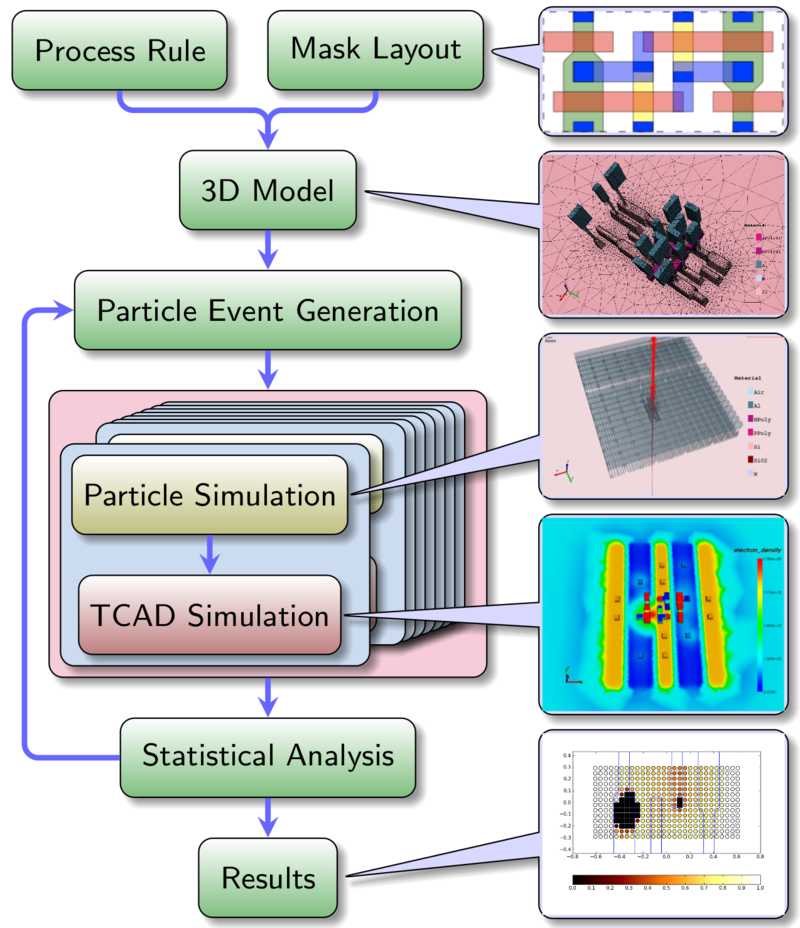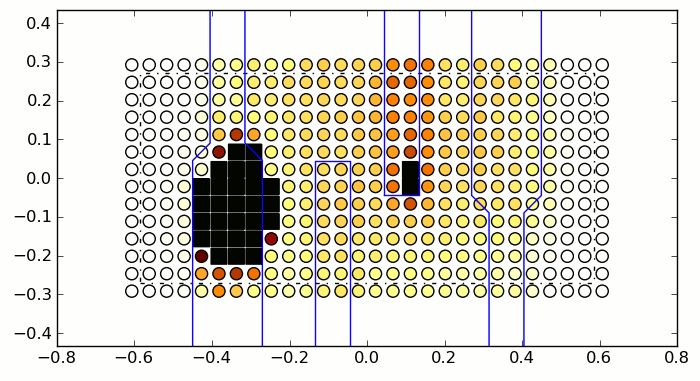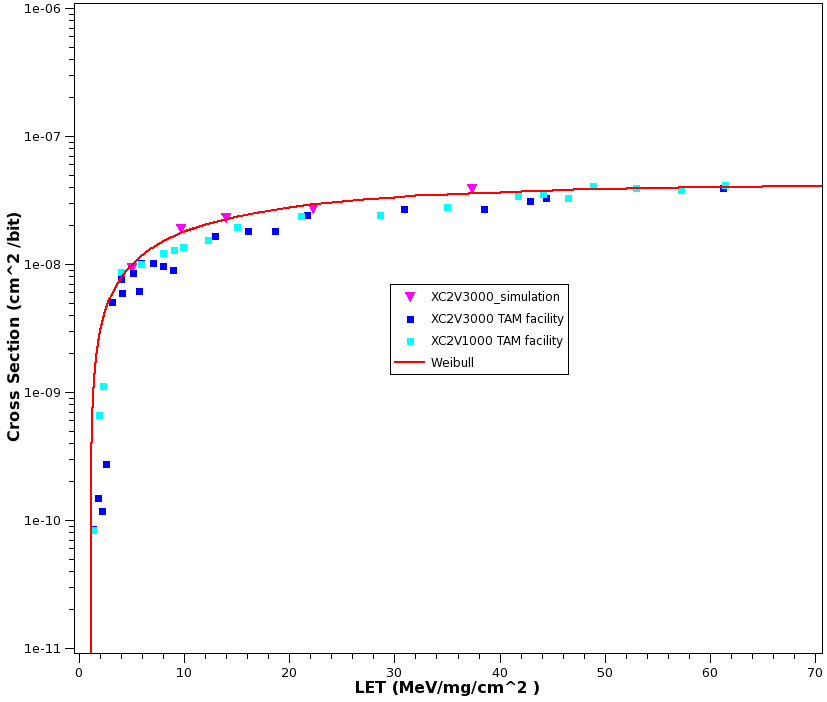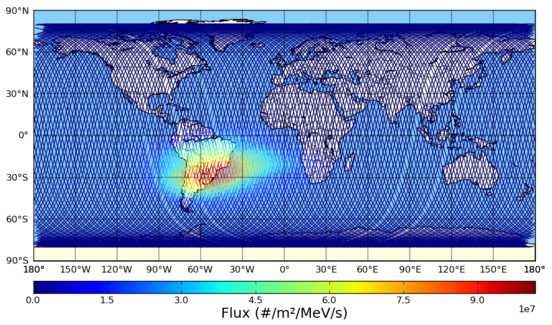Soft-error: Fully-physical simulation
One dominant cause of soft errors is single-event upset from ionizing radiation. An adequate treatment of its physical mechanism involves nuclear physics, semiconductor device physics and electronics.
Over the past decade, dozens of simulation tools were developed across multiple physical disciplines, accumulating into a complete solution for fully-physical simulation of soft errors, representing the state of the art in terms of both coverage and physical depth.
Methodology
Figure on the right shows the work-flow of the solution. The energy distribution along the trajectory of every single energetic particle is simulated by Monte Carlo method, and the device response is simulated in charge carrier transport (TCAD device simulation).
-
Pros
- To have an clear understanding of the behavior of the energetic particle inside the device, thus we can
- Determine what kinds of particle with what energies or angles causes the SEEs
- Determine what kinds of interaction cause the SEEs
- To have an clear understanding of the charge carrier transport of the device, thus we can
- Locate the exact particle injection position that causes SEEs
- Find the transistor parts that are sensitive to SEEs
- Based on the understandings above, we can develop reasonable abstract models of SEE, used for simpler simulation, prediction, and hardening design.
-
Cons
- Time consuming
- TCAD specialist required

Example result
Figure below (left) gives a simulation example of a SRAM cell for SEU, a map for SEU event positions. Black squares are events that cause upsets, and round circles are non-upset events in which depth of color indicates tendency of upset. Simulation gives the exact sensitive area of the cell.
Figure below (right) gives the comparison between simulated results and experimental results of upset cross-section of a commercial SRAM.


Soft-error rate prediction
There are relatively mature models in CRad, based on cross-section obtained from either ground test or simulation.
-
Heavy ion
- available models
- RPP model
- IRPP model
-
Proton
- available models
- Bendel Model with 2 parameters
- PROFIT Model
- J.Barak 2006 Model
Advanced soft-error rate prediction is based on some variants of the sensitive volume method, available with our NRED and NRED-MC tools.

Soft errors in modern SoCs can be best mitigated by a combination of system-level and software-level design hardening, in addition to the use of radiation-tolerant foundation IPs.
 Domestic EDA technology pioneer | PFTN semiconductor
Domestic EDA technology pioneer | PFTN semiconductor

